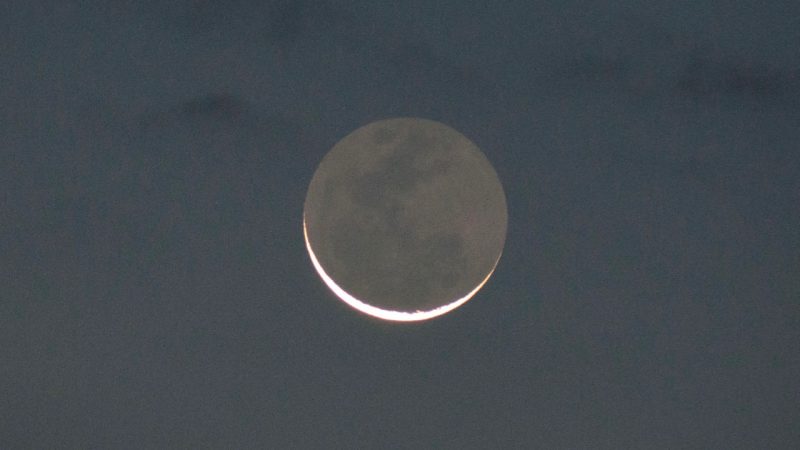

A waning crescent moon from Tom Boz in North Wildwood, New Jersey. Thank you, Tom.
In the week following last quarter moon, the moon continues to wane. You’ll see it as a waning crescent moon – sometimes called an old moon – visible in the east before dawn.
Each morning, the moon shows us less and less of its lighted side. It rises closer to the sunrise, heading for new moon.
Many people miss the waning crescent moon because it’s a morning moon, visible before sunrise. But it’s fun to follow the waning crescent day by day, as it inches into the dawn glare. Autumn is a wonderful time to see a waning crescent moon because – as dawn breaks on autumn mornings – the ecliptic stands nearly straight up with respect to the sunrise horizon. The ecliptic is the path of the sun, moon and planets. When its angle is perpendicular to the horizon, the moon is above the sunrise, rather than to one side of it, and hence easier to see.
As the moon orbits Earth, it changes phase in an orderly way. Follow the link below to understand the phases of the moon.
New moon
Waxing crescent moon
First quarter moon
Waxing gibbous moon
Full moon
Waning gibbous moon
Last quarter moon
Waning crescent moon
Read more: 4 keys to understanding moon phases

With each passing day, the waning crescent moon sinks closer to the sunrise and appears as a thinner crescent. Astronomers call it an old moon. Photo by Amirul Syazani in Port Dickson, Malaysia.
Bottom line: A waning crescent moon comes between last quarter moon and new moon. The next new moon comes on September 9.
Check out EarthSky’s guide to the bright planets.
Help EarthSky keep going! Please donate.
from EarthSky https://ift.tt/GLfilJ


A waning crescent moon from Tom Boz in North Wildwood, New Jersey. Thank you, Tom.
In the week following last quarter moon, the moon continues to wane. You’ll see it as a waning crescent moon – sometimes called an old moon – visible in the east before dawn.
Each morning, the moon shows us less and less of its lighted side. It rises closer to the sunrise, heading for new moon.
Many people miss the waning crescent moon because it’s a morning moon, visible before sunrise. But it’s fun to follow the waning crescent day by day, as it inches into the dawn glare. Autumn is a wonderful time to see a waning crescent moon because – as dawn breaks on autumn mornings – the ecliptic stands nearly straight up with respect to the sunrise horizon. The ecliptic is the path of the sun, moon and planets. When its angle is perpendicular to the horizon, the moon is above the sunrise, rather than to one side of it, and hence easier to see.
As the moon orbits Earth, it changes phase in an orderly way. Follow the link below to understand the phases of the moon.
New moon
Waxing crescent moon
First quarter moon
Waxing gibbous moon
Full moon
Waning gibbous moon
Last quarter moon
Waning crescent moon
Read more: 4 keys to understanding moon phases

With each passing day, the waning crescent moon sinks closer to the sunrise and appears as a thinner crescent. Astronomers call it an old moon. Photo by Amirul Syazani in Port Dickson, Malaysia.
Bottom line: A waning crescent moon comes between last quarter moon and new moon. The next new moon comes on September 9.
Check out EarthSky’s guide to the bright planets.
Help EarthSky keep going! Please donate.
from EarthSky https://ift.tt/GLfilJ

Aucun commentaire:
Enregistrer un commentaire